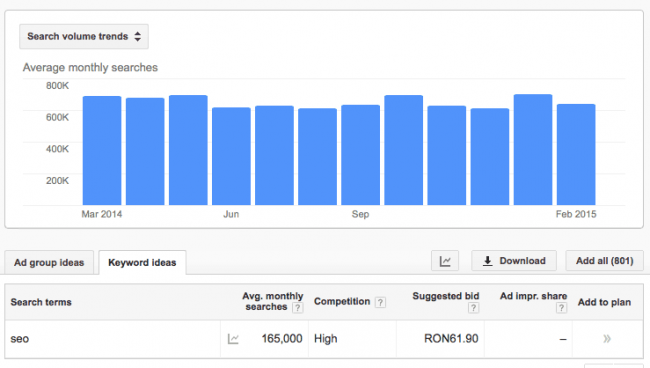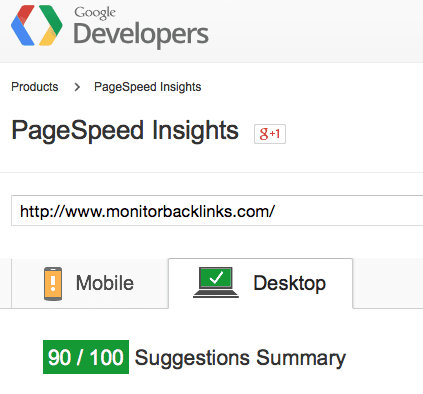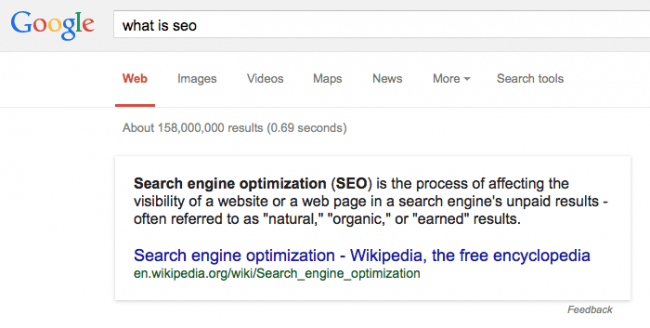34 Search Engine Optimization Tips: Top Techniques and Strategies for the Best SEO Results
Everyone could use some good search engine optimization tips.
SEO is an ever-changing process, and therefore you have to be up to date with all the algorithm updates and best practices.
If you are looking for some good and actionable SEO tips, you arrived in the right place.
Search Engine Optimization is something every website should do. By optimizing a website for search engines, you increase your chances of ranking high for your main keywords, which means you get more traffic to your site.
While SEO is not rocket science, and anyone could do it, you have to understand that there’s a very small border between white hat SEO and black hat SEO.
White hat SEO refers to optimizing your website using the practices agreed by Google. On the other side, Black Hat SEO involves using shady techniques that are violating Google Webmaster guidelines. Black Hat SEO it’s not something you should do if you care about your website.
In this post, I will be talking about search engine optimization tips and tricks for websites that want to achieve long lasting results.
34 Search Engine Optimization Tips: Top Techniques and Strategies for the Best SEO Results
1. Understand the process
SEO is an ongoing process. Search engines are updating their rankings algorithm a few time each year. Hence why SEO techniques that used to work last year, can be obsolete today.
To be successful with SEO, you have to know what works best and avoid using outdated techniques.
2. Results don’t come overnight
I like to think at SEO as a poker game between you and Google. It’s a game of patience. Optimizing a website for higher rankings takes time, and results usually come after months of work.
A very common mistake among beginners is that they expect to see results in the first days, and get discouraged when nothing happens.
If you follow the best SEO practices, with time, results will come.
3. Stay away from “guaranteed SEO results”
If you want to outsource SEO to a company or freelancer, whenever you head the words” Guaranteed SEO”, run as fast as you can. There is nothing more misleading and more untrue than saying you can get guaranteed rankings in search engines.
Those that guarantees they can rank your website on the top positions in Google for certain keywords, most of the time are scammers.
Stay away from companies or freelancers that make empty promises.
4. Don’t over optimize anything
Over optimization is something you must avoid. Don’t do keyword stuffing or building links using the same anchor text. Google penalizes websites that don’t look natural.
5. Publish outstanding content
Your content is the most important part of your website. Without good content, it’s impossible to rank high in Google. Your articles must be well-written and provide real value to your readers.
Google gives more credit to longer articles and posts that get a lot of engagement, like comments, for example. Do your best to engage your readers and make them share their thoughts.
Short articles that don’t bring anything new to the table can get your website penalized by Google Panda. Also make sure you are not covering the same topic too many times, or your site may start to look like a content farm.
Short articles that don’t bring anything new to the table can get your website penalized by Google Panda. Also make sure you are not covering the same topic too many times, or your site may start to look like a content farm.
6. Do keyword research
Never start writing an article without doing keyword research. Use Google Keywords Tool to find what people are searching for and for what problems they’re trying to get answers.
Discover synonyms and what keywords are used to search in Google. Also study the trends and understand if the demand is increasing or decreasing.

7. Write for readers, not search engines
Think about what your readers want to hear from you and write with humans in mind. Very often, SEOs are writing only for the purpose of getting higher rankings, and they end up over-optimizing their content.
Use a friendly tone and be yourself.
8. Publish fresh content frequently
If you publish new articles on a daily or weekly basis, Google will crawl your website more often and will give you more authority.
With new content, you also get more chances of ranking for new keywords. Websites that rank higher tend to publish more content.
9. Make your website user-friendly
Your website has to be intuitive and very easy to navigate. The last thing you would want is users not knowing where to find your content. Create a good navigation system and place links to your best articles on the sidebars.
The better your website is, the more time the users will spend on it, and the higher the chances they will return
10. Improve website speed
Website speed is a ranking factor. Even if it’s not a critical one, it’s something to consider if you want to create a good overall user experience. Websites that load in more than 5 seconds can be labeled as slow by Google.
Use Google PageSpeed Insights to get speed optimization suggestions.

11. Make your URLs user-friendly
Add your main keywords in your URL, but don’t make them too long. Shorter URLs are better for social media sharing as well. URL’s with more than four hyphens may look spammy.
Here’s an example of a correct URL structure for an article titled: How To Improve SEO and Traffic
Website.com/improve-seo-traffic
12. Use unique and relevant titles
Just as anything on your website, your titles have to be unique. Add your primary keywords in your titles. Ranking high without having the main keywords in your title is a very rare scenario.
Your titles have to be catchy and not longer than 55 characters.
13. Meta descriptions
By using a meta description, you give Google a summary of your content. Describe what your articles are about and use your main keywords inside. Use a unique and relevant meta description for every page on your site.
If you are using WordPress, download SEO by Yoast plugin and use it to customize your meta titles, descriptions, and keywords, its easy enough to use.
14. Use a sitemap
A sitemap helps Google easily find your site’s pages and crawl them. If your website has thousands of pages, a sitemap is very important.
There are numerous tools that can help you create a sitemap and even some WordPress plugins.
15. Create a good interlinking system
When publishing a new article, always place links to internal pages to improve the user experience. It’s the easiest ways to create one way backlinks to your pages. You have full control of the anchor text you are using, but make sure you are not abusing it.
Each article you publish should contain links to other pages on your site. It helps increasing the average time per visit and decrease bounce rate.
16. Build smart links
Backlinks are critical for SEO. Without backlinks, your outstanding content will be lost somewhere between page 10 and 20. Follow link building best practices and create links that will help you improve your rankings in Google.
Don’t waste your time building bad backlinks from directory or article submissions websites. Instead, try to build backlinks from authoritative websites.
To increase your domain authority, you must get backlinks from reputable websites in your niche. Keep in mind that relevancy is very important.
Think about quality and not about quantity. A good backlink can have a lot more value than a hundred of low-quality links.
17. Keep track of backlinks
Keeping track of your links is just as important as building them. Use Monitor Backlinks to know when any of your backlinks status changes. With our SEO tool, you can determine if a webmaster unfollows your backlinks or removes them completely.
Many SEOs are building backlinks and then they completely forget about checking their status. That’s a very common mistake you should avoid.

18. Protect from negative SEO attacks
Unfortunately, negative SEO attacks are becoming more and more common. It sometimes happens that competitors want to penalize your website and knock you out of the first page from Google.
Most of the time, negative SEO attacks involve building hundreds or thousands of low-quality and spammy backlinks to your website.
To protect your website from such attacks, you have to keep an eye on all the backlinks your website is getting. Monitor Backlinks automatically sends you alerts when a new website links to you. If a negative SEO attack is unleashed against you, create a disavow report before it’s too late.
19. Monitor keywords rankings in Google
Another important SEO tip is to be up to date with your keywords rankings progress in Google. It will help you understand what has worked best and what has given best results.
By monitoring your rankings, you can also know if your competitors are outranking you.
Use Monitor Backlinks ranking tracker tool to see how your average keywords position is evolving along with your organic traffic.

20. Use social media to do SEO
While social media is not yet an SEO ranking factor, and it will probably not be in the coming future, you can use social media to do SEO. Use Twitter and Google Plus to outreach bloggers and build a relationship with them.
Once you get to know a blogger well enough, you can ask him to link to your articles.
Social media outreach is a great way to build backlinks and relationships.
21. Don’t rely just on Google’s traffic
Google is the main search engine, and even if it’s currently bringing you a good amount of traffic, your business should never depend solely on it. Think what would happen if an algorithm update would hit your site very hard.
Recovering from any Google penalty is a time-consuming process, and sometimes it can take months before you’ll get your traffic back.
Diversify your traffic sources and find ways to drive traffic from other platforms as well.
22. Use Google Webmaster Tools
The use of Google Webmaster Tools is mandatory for any website owner. The free Google tool gives you insights and improvement suggestions for your website. If anything goes bad with your site, this is where you’ll find out first.
23. Use Google Analytics
Google Analytics is one of the most advanced visitors tracking tool available, and you should take full advantage of it. It’s free and can give you a huge amount of details about the users visiting your site.
Use Google’s click maps to determine where users are clicking the most and find ways to improve your site.
24. SEO is never “done”
Lots of SEOs think that their website is “done” and lose focus on optimizing. Hence why competitors take advantage and outrank them.
The truth is that your website is never “done” and you should never stop doing SEO. There are always new opportunities and SEO techniques you can try to make your website rank even higher.
25. Avoid using flash
Flash websites might look pretty and cool, but they are the worst for SEO. Google can’t understand Flash and Ajax, meaning it will be impossible to crawl your content.
26. Optimize images
Use images to help readers understand your content better. Insert screenshots with examples, if appropriate.
Each image should have a relevant name, ALT tag, and description. Captions are also good for your pictures to describe with text what your image is about. By doing SEO for your images, you also get higher chances to rank high in Google Images.
27. Don’t link out to bad websites
Never place links to websites that are penalized or that are unrelated. When you link out to a website, you are vouching that you are trusting and recommending it as a good resource.
Analyze the website you want to link to, and determine if it’s valuable or not. Bad linking can get your website penalized.
If you are uncertain about the quality of a website, it’s best to use the rel=nofollow attribute.
28. Don’t concentrate on PageRank
PageRank is useless. I mean, literally, useless. Google has stopped updating the PageRank toolbar more than one year ago, and announced that it doesn’t have any plans to update it.
Your website’s PageRank is irrelevant. Try to improve your authority by building quality links.
29. Use a short domain
If you haven’t yet started to build your website, choose a short domain and try to create a brand around it. Exact match domains don’t have the value they used to have a few years ago, so there’s no reason to buy a long domain, just for the sake of having all your keywords inside it.
Pick a domain that’s easy to remember and pronounce.
30. Use a good SEO TLD
The most common domains are using the extension .com, but with millions already sold, it has become challenging to find good domains.
Choose a correct domain extension for SEO and make sure you can compete with the location you want to target.
31. Fix broken pages
Sometimes your website might have links to pages that don’t exist anymore. Use Google Webmaster Tools to identify these issues and fix them.
32. Don’t pay for backlinks
Paid backlinks are terrible for SEO. If you want to purchase advertising links or banners, make sure you are using a nofollow attribute to them.
33. Structure your content in Google Webmaster Tools
You’ve probably seen the knowledge cards already. Google has started showing cards with information scraped from third party websites with links to the source.
To have higher chances of getting knowledge cards with your website, you can structure your website in Google Webmaster Tools and tell Google more about your website layout. To get started, simply click on ‘Search Appearance’ and then on ‘Structured data’.

34. Make your website mobile-friendly
Google has serious plans for forcing websites move to a mobile-friendly platform. In the coming weeks, Google will release a mobile ranking algorithm that will include usability factors.
Websites that have a mobile version will be labeled as such, and be rewarded with higher rankings for mobile search queries.
Conclusion
These 34 search engine optimization tips should help you take your SEO strategy to the next level. Follow the best practices and always be up to date with what’s new and what is working best.
Have I missed anything? Let me know your thoughts in the comments section.
Any Good? Let me know - Like Comment Share





No comments:
Post a Comment